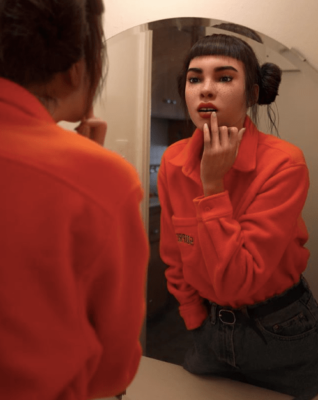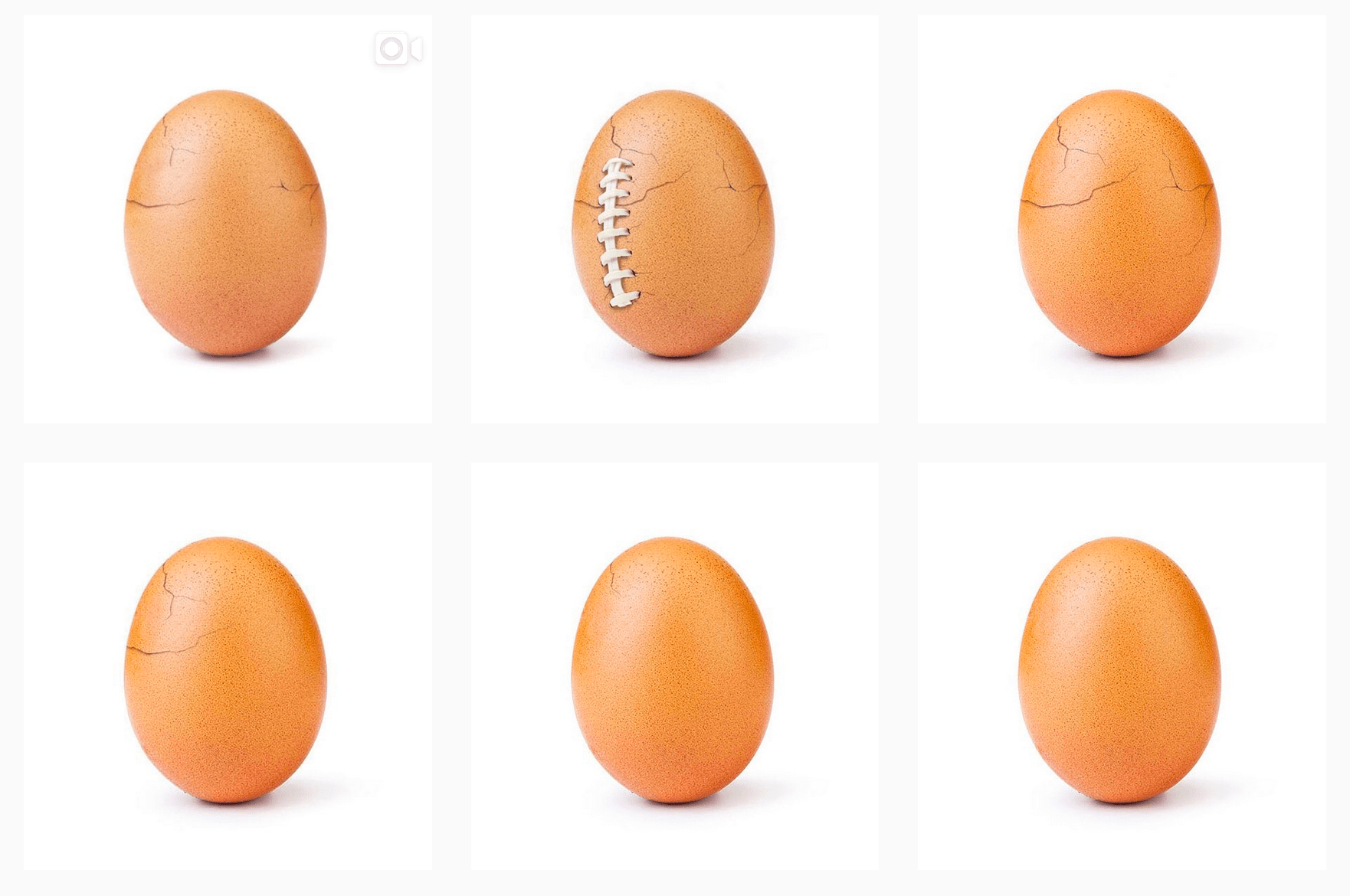“I’m the world record egg,” begins Eugene at the top of his hotly anticipated Hulu debut. “You may have heard of me.”
Indeed, if you’ve been anywhere on social media in the past four weeks, chances are you have. On January 4, the newborn Instagram profile @world_record_egg catapulted to the top of pop culture with a stock photograph of an everyday household egg, surpassing Kylie Jenner’s baby announcement as the most liked image on the platform.
Fueled by a simple mission – “Let’s set a world record together and get the most liked post on Instagram” – the egg’s ascendance to internet royalty was swift and decisive. Within two days, the humble ovoid had racked up over 25 million likes, a number that has since doubled, along with 10 million followers.
Naturally, the internet rejoiced. And meme’d. It was by all accounts an incredible moment. But things were just getting started for Eugene, the name which his growing fanbase quickly adopted. On January 18, world_record_egg uploaded another photograph of the same image, this time sporting a hairline fracture. The implications were clear: something big was about to happen, and soon.
For the next two weeks, Eugene would capture the attention of some of the biggest names in business. The Atlantic estimated Eugene could receive upwards of $10 million dollars for his first brand deal, a number that quickly made the rounds online. Impersonator profiles popped up faster than Elvis clones on the Vegas strip. The egg even started selling official merchandise, donating 10% of the profits to charity.
By the time word dropped that streaming giant Hulu would be the first to partner with the humble ovum for Super Bowl LIII, one thing had become very clear – Eugene wasn’t an egg. He wasn’t even an Instagram account. Eugene was a bonafide influencer, and it was time to get crackin’.

The Trio That Hatched It All
Behind every great egg is a real person, of course, and turns out Eugene is actually three. Breaking their silence with The New York Times, 29 year-old ad professional Chris Godfrey revealed he runs the account with partners Alisa Khan-Whelan and C.J. Brown out of a shared flat in London. Although the trio have received enough attention to launch their own influencer careers, the eggheads firmly stated that the focus will remain on Eugene.
Speaking with the times, Khan-Whelan admitted “‘We’ve had plenty of amazing offers and opportunities that have come on to the table….we’ve not really been sharing details because we don’t think this is about us. This is about Eugene the egg and what the egg can do.’”
After all, Eugene is as real as anyone could be on social media. He has an ethos, one that seems to revolve staunchly around positivity and self care. His Hulu debut, cheekily nested under the label Season 1, turned out to be sneak PSA for mental health, ending with a shoutout for charitable organization Mental Health America. “Recently I’ve started to crack,” the egg explains. “The pressure of social media is getting to me. If you’re struggling too, talk to someone.”
Eugene also has industry connections. According to The Atlantic, JerryMedia – the agency behind the infamous FYRE Fest influencer campaign – was initially working with the team in an unofficial capacity in an attempt to broker a deal. Instead, they opted for a partnership brokered by ad agency The Times, who put them in contact with Hulu.
Eugene is far from alone when it comes to online influencers that technically don’t exist. Lil Miquela is an Instagram star with 1.5 million followers to her name who frequently works with some of the top names in fashion and graces the covers of industry publications. The only twist? She’s a 3D computer generated model.


Like Eugene, Miquela’s lack of existence hasn’t been a barrier in reaching legitimate influencer status, and leveraging that power for real-world causes. Throughout her illustrious career, Miquela has shown support for LGBT youth, the Innocence Project, and Black Lives Matters.
As is so common with influencers, the bulk of activity comes from younger generations. Eugene’s creators noted to the Times that they receive the most attention between 3:00 and 4:00pm, when school kids are just getting out.
What Came First: The Influencer or the Egg
More than just a good story, @world_record_egg raises serious considerations for the field of influencer marketing. For example, virtual ‘influencers’ like Eugene pose little PR risk to brands looking for a slice of pop culture relevance, the same reason why pet influencers are also on the rise. In terms of brand safety, someone (or some egg) like Eugene seems like an increasingly safer bet than, say, Jake Paul.
Additionally, the Egg Saga demonstrates not only the power that comes with a huge social following, but what brands and influencers can do with it.
“This campaign created a level of suspense that got everybody talking,” says Open Influence Creative Director Blake Chase. “The fact that the final chapter lead up to something meaningful, that could actually help people, was a really satisfying way for it to end that made everyone feel great.”
Eugene could have ended up as yet another Super Bowl stunt, a quick one-off to capitalize on their meteoric rise to stardom. But Godfrey, Khan-Whelan and Brown understood the opportunity in so much public attention, and leveraged it to produce a beloved character with real-world impact.
While Eugene the Egg raises as many questions as he lays, this much we can say is true: if it walks like an egg, and talks like an egg, it’s probably an influencer.






